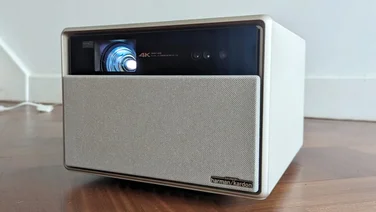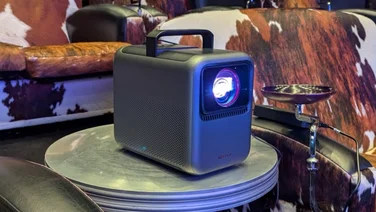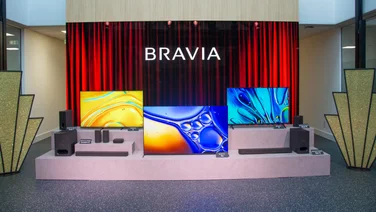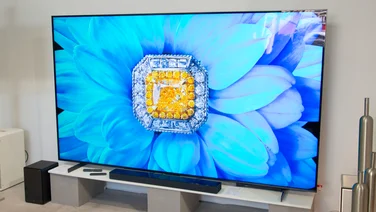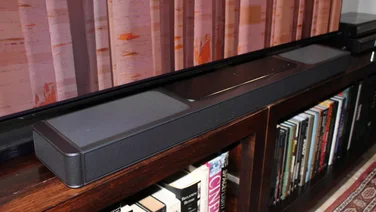To help us provide you with free impartial advice, we may earn a commission if you buy through links on our site. Learn more



The XJ-A135 is the baby of Casios new Green Slim range. It has a resolution of 1,024×768 and a claimed brightness of 2,000 lumens. Considering its based on an LED light source, thats pretty incredible. Other models will be available soon, including widescreen versions with 2,500 or even 3,000 lumens.
To date, weve seen several LED-based projectors the majority being pocketable pico projectors. However, with brightnesses of around 10 lumens, their images are viewable only in a completely dark room. Dell and LG launched LED business projectors around a year ago, but these had 50 and 160 lumens respectively. Both werent really bright enough, had relatively poor image quality and were still bulky to carry around due to their external power supplies.
Casios new Green Slim range may have taken a year longer to appear, but the XJ-A135 has far fewer flaws. Its A4 sized, so is easy to slip into your laptop bag along with your laptop. Its not exactly a featherweight at 2.3kg, but at least the power supply is integrated so the only other ancilliary youll need to bring with you is a power cable.
Theres no need for a VGA or HDMI cable as the XJ-A135 has built-in WiFi. Once youve installed the software from the CD, a small taskbar appears on your desktop and automatically attempts to connect to the projector. It asks for a login code, which is displayed by the projector for a couple of minutes after you switch it on. This also shows the projectors SSID and IP address in case you need it.

Once connected, your desktop is automatically mirrored and displayed by the projector. The only flaw is that it you have to manually change your screen resolution to 1,024×768 for the best quality; non-native resolutions make text look distinctly fuzzy. Bear in mind, too, that youll forgo wireless internet access while your laptop is connected to the projector, so it isnt much good if you need to show your audience live websites.
The utility oddly named Wireless Connection 3 provides two options: high speed or high resolution. The latter is the best choice for PowerPoint presentations or any other demonstration where you want the best quality. High speed is designed for videos, although we never saw smooth playback even with very low-resolution clips. Wed estimate it managed around 15-20fps, but it wasnt simply jerky motion that made the videos unwatchable, it was the horizontal tearing that meant there were split seconds where half of the previous frame and half of the current frame were visible.
If you do need to show videos or animations, you have two other options. The first is to use an HDMI or VGA cable (or the bundled composite video cable). The second is to plug a USB flash drive into the XJ-A135s USB port and use its built-in media player. This could be the best option if you travel around making presentations as it means you dont need to take your laptop with you.
Casio bundles software to convert PowerPoint presentations and videos, and the built-in media players interface makes it easy to navigate to your files, even on a crowded memory stick with lots of sub-folders. Converted PowerPoint files were indistinguishable from the originals although, annoyingly, a sound clip embedded into a slide didnt play.
Both the PowerPoint and video converter couldnt be easier to use. You simply drag your files onto them and they convert them immediately there are no settings to worry about. When converting videos, the software was happy to accept most of our test files including DivX, XviD, MP4 and WMV. It refused to convert MPEG1 and VOB files, and those with Dolby Digital audio, as the codec wasnt installed on our test laptop. The resulting videos played smoothly, but the default quality (640×480) looked a bit blocky at large screen sizes. The widescreen preset produced better quality.

Controlling the projector is easy with the well-designed remote control. We like the powered zoom and focus controls, plus the 2x zoom range which allows you to project a 75in image from just seven feet away. Were not so keen on the membrane buttons on the projector itself; these are hard to locate by touch alone, making it more tedious to navigate the menus.
There are plenty of options to tweak if you so desire. By default, the XJ-A135 is in Eco1 mode, which is the best compromise between brightness and noise. Turn Eco mode off and the fan becomes so loud youll have to shout to make yourself heard above the racket. Oddly, when Eco mode is off, the colour presets disappear, leaving you with just brightness, contrast and colour balance to adjust. Of the four colour presets Standard, Graphics, Theatre and Blackboard we found Graphics and Theatre offered the best colour accuracy.
Still, colours were never quite perfect. This could be down to the unusual arrangement that red, green and blue light is produced by the XJ-A135. Red light comes from a high-power LED, blue from a blue laser and, finally, green light (the hardest to produce at high intensities using semiconductors) is produced by converting blue light (using a phosphor) from a laser.
These are alternated at a high frequency to create the impression of a full colour image (in combination with a traditional DLP chip). Examining our usual test photos, greens were a little too fluorescent, while blues and reds werent quite as intense and saturated as wed like. Contrast, too, wasnt quite up to scratch and all these factors meant that photos looked a little washed out. Highlight and shadow detail was lacking, too, so shadows turned into blocks of grey while highlights became solid areas of off-white.
This may sound overly negative, so its important to clarify that, for the majority of presentations with text, charts and the odd graphic, the XJ-A135 is more than good enough. If the meeting room isnt too brightly lit, you may even get away with using Eco2 mode, which is noticeably dimmer than Eco1, but the fan is almost inaudible.
Focus across the screen is very good, although the top-right corner was slightly fuzzy on our test unit. However, compared to Dells M109S, the XJ-A135 is in another league. Unfortunately, the classic DLP rainbow effect was all too noticable on very high-contrast images and videos.

With auto keystone correction (for the adjustable flip-out front foot) and virtually instant start-up and shut-down times, the XJ-A135 is a very convenient presentation tool. £800 is a lot of money to spend on a projector whose image quality isnt brilliant, but the wireless connection and built-in media player gain some ground back, especially if youll use these a lot. More importantly, the only running cost is electricity, since theres no need to ever replace the lamp.
Overall, the XJ-A135 is a better than average projector, but we think the widescreen models in the Green Slim range will be more appealing. For example, the XJ-A245 is almost identical except that it has a 1,280×800 resolution and produces 2,500 lumens. Its not yet on sale, but it’s anticipated to cost under £1,400. If you can live without WiFi and the media player, the XJ-A240 will cost less than £1,200. These are undoubtedly expensive, but theyll save you money in the long run compared to a traditional projector and are more portable than most.

